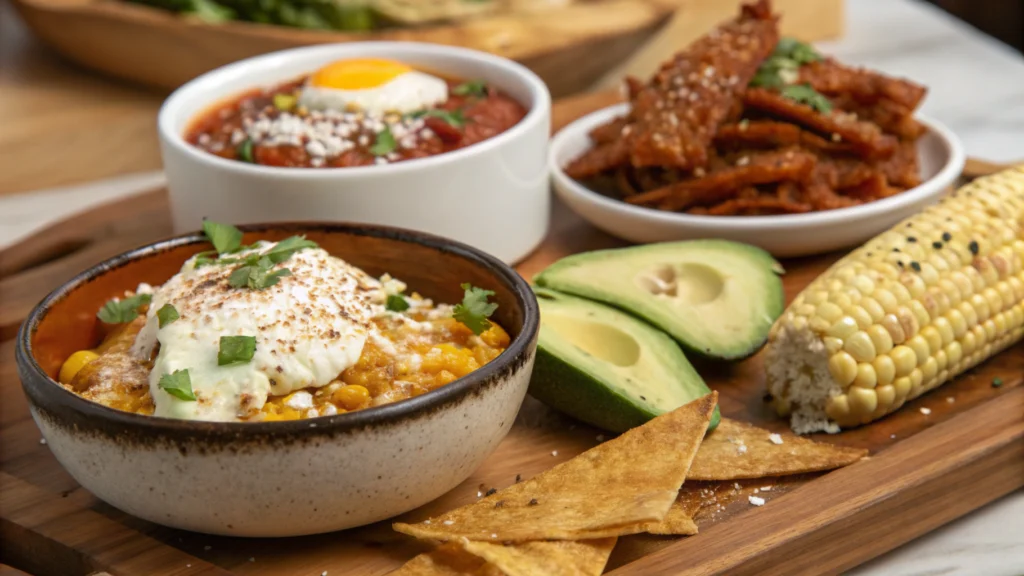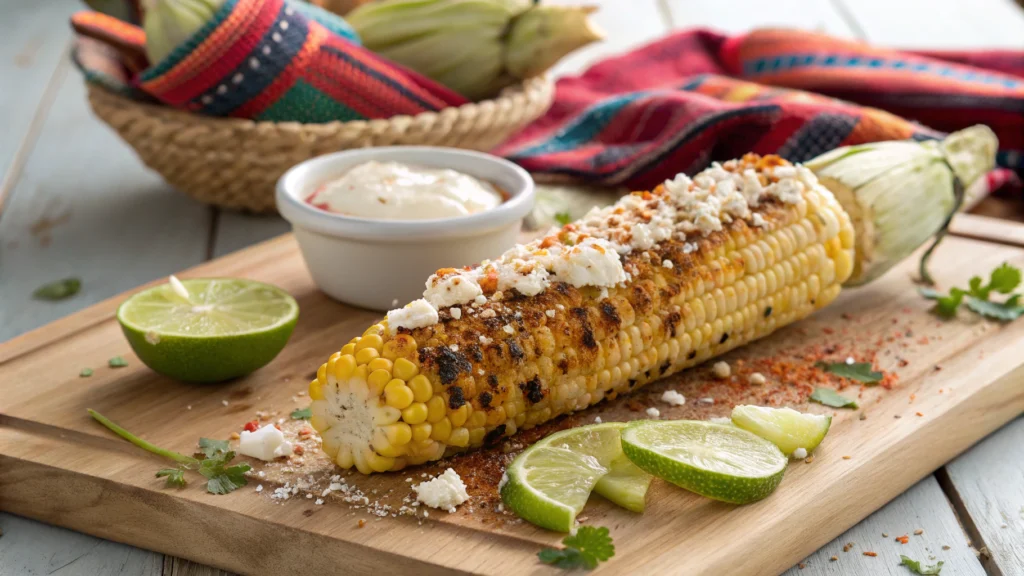
![Cotija cheese crumbled over traditional Mexican dishes]
Cotija, often called the “Parmesan of Mexico,” is a distinctive aged cheese that has become increasingly popular in cuisines worldwide. This hard, crumbly cheese originated in Mexico and has a rich cultural heritage that spans centuries. With its unique salty flavor profile and versatile culinary applications, cotija has secured its place as an essential ingredient in authentic Mexican cooking and beyond.
In this comprehensive guide, we’ll explore everything you need to know about this remarkable cheese—from its humble origins to its nutritional benefits and culinary uses.
What is Cotija Cheese?
is a Hispanic-style aged cow’s milk cheese named after the town of Cotija in Michoacán, Mexico. It’s characterized by its firm texture, strong salty flavor, and crumbly consistency. Traditional cotija is aged for at least 100 days, resulting in a cheese that doesn’t melt when heated but rather maintains its structure while adding a distinctive flavor to dishes.
There are two main varieties of cotija:
- Fresh cotija (cotija fresco): Younger, with a milder flavor and more moisture
- Aged cotija (cotija añejo): Harder, drier, and more intensely flavored
This versatile cheese serves as both a garnish and a flavor-enhancing ingredient in numerous Mexican dishes, from street corn (elote) to enchiladas.
Origin and History
Cotija’s roots trace back to the mountainous region of Michoacán in Mexico, specifically the town of Cotija de la Paz. Local dairy farmers began producing this cheese centuries ago, developing techniques passed down through generations.
The cheese was originally created as a preservation method in this mountainous region where refrigeration wasn’t available. The high salt content and aging process allowed the cheese to remain edible for extended periods, making it ideal for the local climate and agricultural practices.
Traditionally, cotija was made during the rainy season (July to October) when cows produced milk rich in fat due to the abundance of fresh grass. This seasonal production contributed to cotija’s special characteristics and cultural significance in Mexican cuisine.
Over time, cotija transcended its regional origins to become a staple throughout Mexico and eventually gained international recognition as Mexican cuisine spread globally.
🌶️ Taste Profile
Cotija offers a distinctive flavor experience that sets it apart from other cheeses:
- Flavor: Predominantly salty with subtle tangy notes and a milky undertone
- Texture: Dry and crumbly, similar to feta when fresh and more like Parmesan when aged
- Aroma: Mild to pungent depending on age, with earthy notes
- Aging Impact: As cotija ages, it develops more complex flavors with hints of nuttiness
- Salt Level: Notably saltier than many other cheeses, which makes it perfect as a finishing accent
This robust taste profile explains why cotija is typically used in small amounts—a little goes a long way in enhancing dishes with its distinctive character.
🧪 How is Cotija Made?
The traditional production of cotija follows time-honored methods:
- Milk Selection: High-quality unpasteurized cow’s milk is used, traditionally from cows that graze on seasonal mountain grasses.
- Curdling: The milk is curdled using rennet, then heated to separate curds from whey.
- Molding: Curds are placed into cylindrical molds and pressed to remove additional moisture.
- Salting: The cheese is heavily salted, which contributes to its preservation and distinctive flavor.
- Aging: Traditional cotija is aged for 3-12 months in cool, dry environments. The aging process creates the hard, crumbly texture and intensifies the flavor.
- Final Product: The result is a cylindrical cheese with a natural rind, typically weighing between 5-20 pounds.
Modern industrial production follows similar principles but often uses pasteurized milk and controlled environments to ensure consistency across batches.
🍽️ What is Cotija Used For?

is versatility makes it a prized ingredient in numerous culinary applications:
Traditional Mexican Dishes
- Elote (Mexican street corn): Grilled corn rolled in mayonnaise and coated with cotija, chili powder, and lime
- Enchiladas: Sprinkled over the top before or after baking
- Tacos: Used as a finishing touch for various types of tacos
- Beans: Mixed into refried beans for added flavor
- Soups: Garnished over pozole or black bean soup
Contemporary Applications
- Salads: Crumbled over green salads for a salty punch
- Roasted Vegetables: Sprinkled over roasted vegetables like Brussels sprouts or potatoes
- Pasta: Used as an alternative to Parmesan in pasta dishes
- Burgers: Incorporated into gourmet burger toppings
- Avocado Toast: Added as a flavorful topping
Cooking Properties
Unlike many cheeses, cotija doesn’t melt when heated, maintaining its structure and texture. This property makes it ideal as a finishing cheese that adds both flavor and textural contrast to hot dishes.
🔥 Is Eating Cotija Good for You?
this cheese offers several nutritional benefits when consumed in moderation:
Nutritional Profile
- Protein: Contains approximately 5-7g per ounce, supporting muscle maintenance
- Calcium: Rich source of calcium for bone health
- Vitamin B12: Contains vitamin B12, important for neurological function
- Healthy Fats: Provides conjugated linoleic acid (CLA), which has been linked to various health benefits
According to research published in the Journal of Dairy Science, traditional Mexican cheeses like cotija contain beneficial probiotic bacteria that support gut health.
Considerations
- Sodium Content: is high in sodium (approximately 400-500mg per ounce), making it important to consume in moderation for those monitoring salt intake
- Fat Content: As a full-fat cheese, cotija should be enjoyed as part of a balanced diet
- Calories: Moderate calorie content compared to some other cheeses (about 100 calories per ounce)
A 2018 study from the American Journal of Clinical Nutrition suggests that moderate consumption of full-fat cheese may not increase heart disease risk as previously thought and could potentially offer some protective effects when part of a balanced diet.
What Are the Benefits of Cotija?
Beyond its delicious taste, this cheese offers several advantages:
Culinary Benefits
- Flavor Enhancement: Adds a dimension of salty, umami richness to dishes
- Versatility: Works in both traditional and modern recipes
- Long Shelf Life: When properly stored, aged cotija can last for months
- Heat Stability: Doesn’t melt or become stringy when heated, maintaining texture
Nutritional Benefits
- Source of Protein: Provides complete proteins with all essential amino acids,as confirmed by research from the Journal of Dairy Science
- Calcium-Rich: Supports bone health and cellular functions,according to the National Institutes of Health dietary guidelines
- Probiotic Potential: Traditionally made cotija contains beneficial bacteria,as documented in Food Microbiology journal
- Vitamin Content: Contains vitamins A, B12, and K2,, as analyzed in the comprehensive cheese nutrient database from USDA
Cultural Benefits
- Preserves Tradition: Supporting cotija production helps maintain traditional cheese-making practices
- Cultural Exchange: Introduces people to authentic Mexican food heritage beyond commonly known dishes
Is Cotija Like Mozzarella?
Despite both being popular cheese options, this cheese and mozzarella have significant differences:
Key Differences
- Texture: this cheese is dry and crumbly; mozzarella is soft and stretchy
- Melting Properties: this cheese doesn’t melt when heated; mozzarella is prized for its melting quality
- Flavor Profile: this cheese is salty and tangy; mozzarella is mild and milky
- Usage: this cheese is typically used as a finishing cheese; mozzarella is often integrated into dishes
- Moisture Content: this cheese has low moisture; mozzarella (especially fresh) has high moisture
When to Use Each
- Choose this cheese when you need a salty, flavorful finishing touch that maintains texture
- Choose mozzarella when you want a melty, stretchy cheese experience
🧀cotija cheese substitute
If you can’t find this cheese, these alternatives can work in many recipes:
Close Substitutes
- Feta: Similar crumbliness but more moist; rinse to reduce saltiness
- Ricotta Salata: Dry, salty version of ricotta with comparable texture
- Queso Fresco: Milder Mexican cheese with similar crumbliness
- Parmesan: Comparable saltiness and non-melting properties, though flavor differs
- Romano: Sharp, salty flavor profile works as a substitute in many applications
Substitution Tips
- For fresh cotija: Use feta or queso fresco
- For aged cotija: Use Parmesan, Romano, or ricotta salata
- Adjust salt levels: When using substitutes, consider adjusting other salt in your recipe
🧑🍳 Cojita vs. Cotija
It’s worth addressing a common spelling confusion:
“Cotija” is the correct spelling for this Mexican cheese, named after the town of Cotija in Michoacán.
“Cojita” is a misspelling that has become somewhat common in recipes and even some product listings.
When searching for recipes or purchasing this cheese, remember that authentic sources will use the correct spelling “this cheese.” The misspelling doesn’t refer to a different type of cheese—it’s simply an error that has become widespread.
Famous Recipes Using Cotija
Try these classic dishes to experience this cheese unique contribution:
Elote (Mexican Street Corn)
The quintessential cotija dish featuring grilled corn slathered in mayonnaise, cotija, lime juice, and chili powder.
Enchiladas Verdes
Corn tortillas filled with chicken, covered in green tomatillo sauce, and topped with crumbled cotija.
Tostadas de Tinga
Crispy tortillas topped with shredded chipotle chicken, avocado, lettuce, and generous this cheese crumbles.
Chilaquiles
Fried tortilla chips simmered in salsa, topped with eggs, avocado, crema, and this cheese.
Sopa de Tortilla
Traditional tortilla soup garnished with avocado, fried tortilla strips, and a sprinkle of this cheese.
10 Frequently Asked Questions
1. Can I eat it if I’m lactose intolerant?
Aged this cheese contains very little lactose due to the aging process, making it potentially tolerable for those with mild lactose intolerance. However, fresh this cheese contains more lactose.
2. Is cotija vegetarian?
Traditional this cheese uses animal rennet, making it non-vegetarian. However, some modern versions may use vegetable rennet—check the label if this is a concern.
3. How should I store it?
Wrap it in wax paper, then loosely in plastic wrap, and refrigerate. Properly stored this cheese can last 1-2 months.
4. Can be frozen?
While possible, freezing isn’t recommended as it can alter the texture. If necessary, crumble before freezing for best results.
5. Where can I buy ?
Find it in Hispanic grocery stores, specialty cheese shops, and increasingly in mainstream supermarkets’ specialty cheese sections.
6. Is it the same as “Mexican white cheese”?
No, “Mexican white cheese” usually refers to queso fresco, which is softer and milder than this cheese .
7. How can I tell if this cheese has gone bad?
Discard this cheese if it develops an ammonia smell, unusual mold (beyond the natural rind), or a slimy texture.
8. Is it safe during pregnancy?
Commercially produced this cheese made with pasteurized milk is generally considered safe during pregnancy.
9. Does this cheese need to be refrigerated?
Yes, always refrigerate this cheese to maintain its quality and safety.
10. Can I make it at home?
While challenging, home cheesemaking enthusiasts can make a simpler version of this cheese with the right equipment and ingredients.
Whether you’re preparing authentic Mexican cuisine or experimenting with fusion dishes, this cheese offers a distinctive flavor that can elevate your culinary creations. From its humble origins in the mountains of Michoacán to international recognition, this cheese continues to delight food enthusiasts with its unique characteristics and versatile applications.
Related

